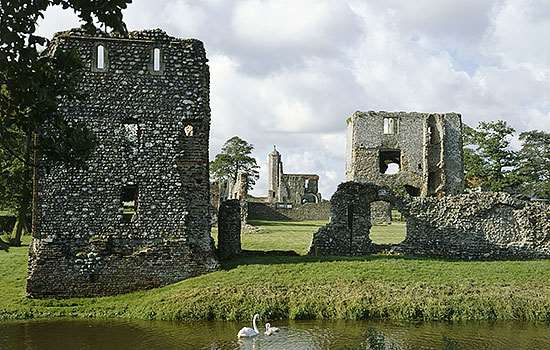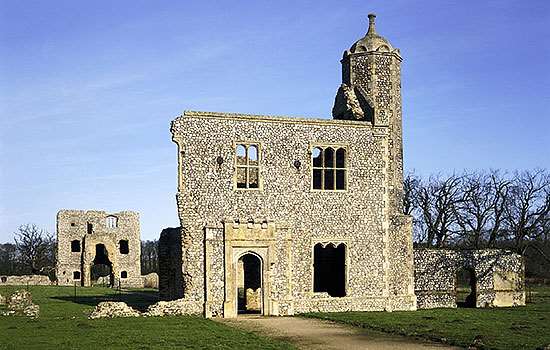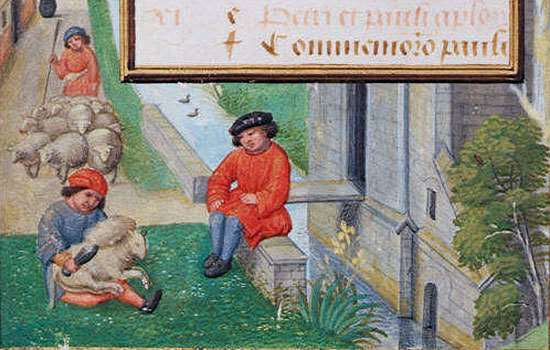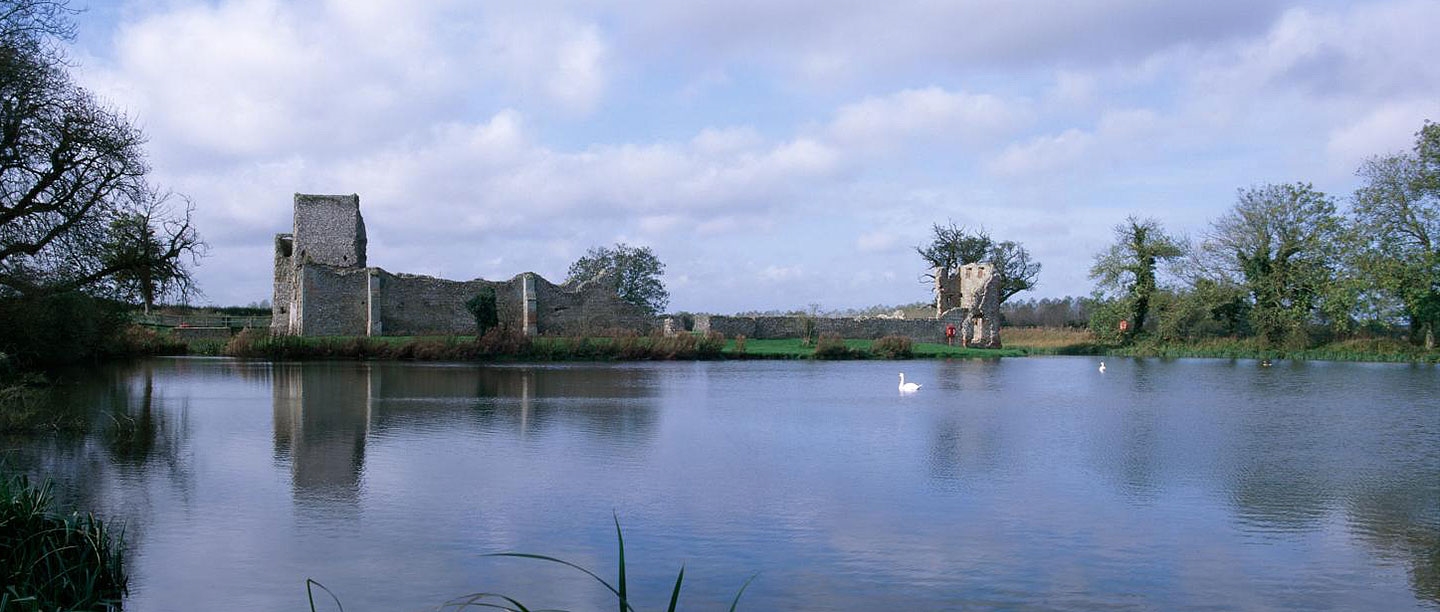The early castle
The site of Baconsthorpe was acquired from the Bacon family in the early 15th century by William Baxter, a free yeoman.
The earliest castle building, the inner gatehouse, was begun by William’s son, John (d.1479), a lawyer who had risen to prominence as a supporter and agent of William de la Pole, 1st Duke of Suffolk. He changed the family name to Heydon to disguise his comparatively lowly origins.
During the turbulent Wars of the Roses (1455–85), when Yorkists and Lancastrians fought over who should be King of England, John Heydon often switched political allegiances to serve his own ends. He made many enemies, who regarded him as shifty, ruthless and grasping. But cunning lawyer that he was, he always seemed to get the better of them.
From the start, he planned Baconsthorpe to provide his family with an impressive residence to show off their high status as landowners and knights.
John’s son, Sir Henry Heydon (d.1504), completed and extended the castle, adding the garden court in the early 16th century. He was knighted at Henry VII’s coronation in 1485 and held several highly responsible positions, which gave the family new status and stability, and allowed his successors to be peaceful and prosperous landlords.
The wool industry at Baconsthorpe
Although the Heydons gained their initial wealth through the legal profession, it was the wool industry that eventually provided the bulk of their wealth. By the Tudor period, Baconsthorpe was established as a vast and profitable wool-producing estate.
Sir John Heydon II (c.1470–1550) converted the eastern service range of the castle into a wool processing ‘factory’. Large windows provided light for the spinners and weavers to produce cloth.
The textile industry brought considerable prosperity to the Heydon family, whose cloth was sold in both England and the Netherlands. Sir Christopher Heydon I (1518/19–79) once entertained 30 head shepherds of his own flocks at Christmas dinner, which suggests that there were 20,000 to 30,000 sheep on his lands.
Profits were spent on lavish living and extensive building works during the 16th century, including the construction of the outer gatehouse and a park in 1561.
Read more about the Heydons’ wool factoryThe fall of the Heydons
Despite the immense wealth they acquired from the wool industry, the Heydons were poor estate managers. Christopher Heydon I died in 1579 having accumulated large debts, forcing his son, William, to sell off parts of Baconsthorpe.
Yet the Heydons continued to spent large amounts on the castle. In the late 16th or early 17th century, an ornamental mere was created on the eastern arm of the moat, and the formal gardens which have been recorded on the estate were also probably created at this time.
By the mid-17th century the insolvency of successive Heydons forced them to try to pay off their debts by demolishing much of the castle and selling off the materials to be reused in buildings elsewhere. The stained glass Heydon shields were removed from the banqueting hall, and can now be seen in the windows of the south aisle of Baconsthorpe Church.
The outer gatehouse survived and was converted into a private dwelling, known as Baconsthorpe Hall. It remained occupied until 1920, when one of the turrets collapsed.
Further reading
Dallas, C, Sherlock, D, Buckley, D and Glazebrook, J, Baconsthorpe Castle: Excavations and Finds 1951–1972, East Anglian Archaeology Report 102 (Dereham, 2002)
Rigold, SE, Baconsthorpe Castle, Norfolk (HMSO guidebook, London, 1966)
Rigold, SE, ‘Baconsthorpe Castle’, Archaeological Journal, 137 (1980), 331–2
Norwich Castle Museum holds many objects found during excavations at Baconsthorpe Castle.
Find out more
-

Visit Baconsthorpe Castle
Visit the castle to explore the extensive remains of the Heydons’ impressive residence. Download the audio tour before you go.
-

Description of Baconsthorpe Castle
Read a description of the extensive ruins of this moated and fortified manor house, which are a testament to the rise and fall of the Heydons.
-

The Rise and Fall of a Tudor Wool Factory
Find out more about how the Heydons made a fortune from the East Anglian wool trade, and then lost it all.
-

MORE HISTORIES
Delve into our history pages to discover more about our sites, how they have changed over time, and who made them what they are today.
